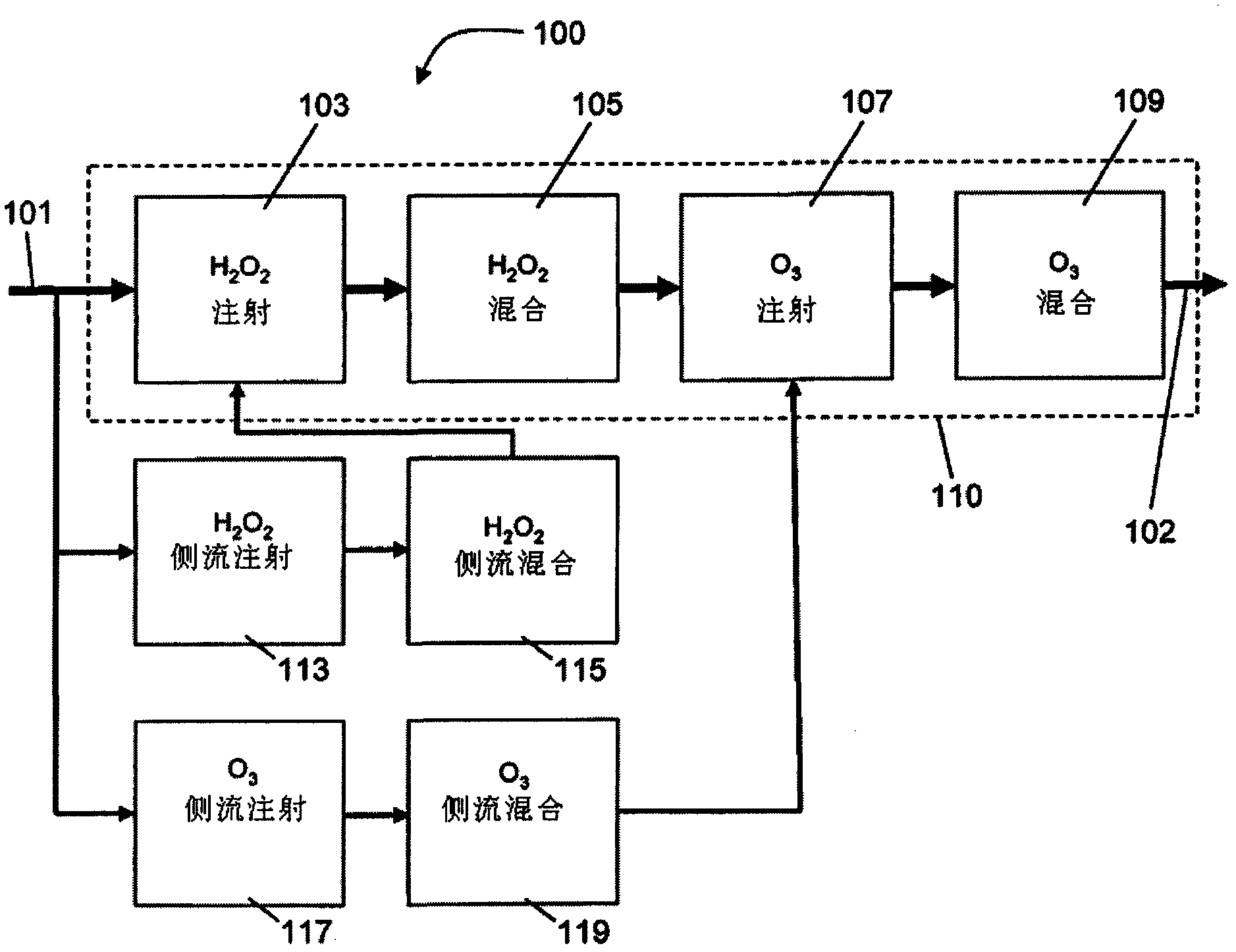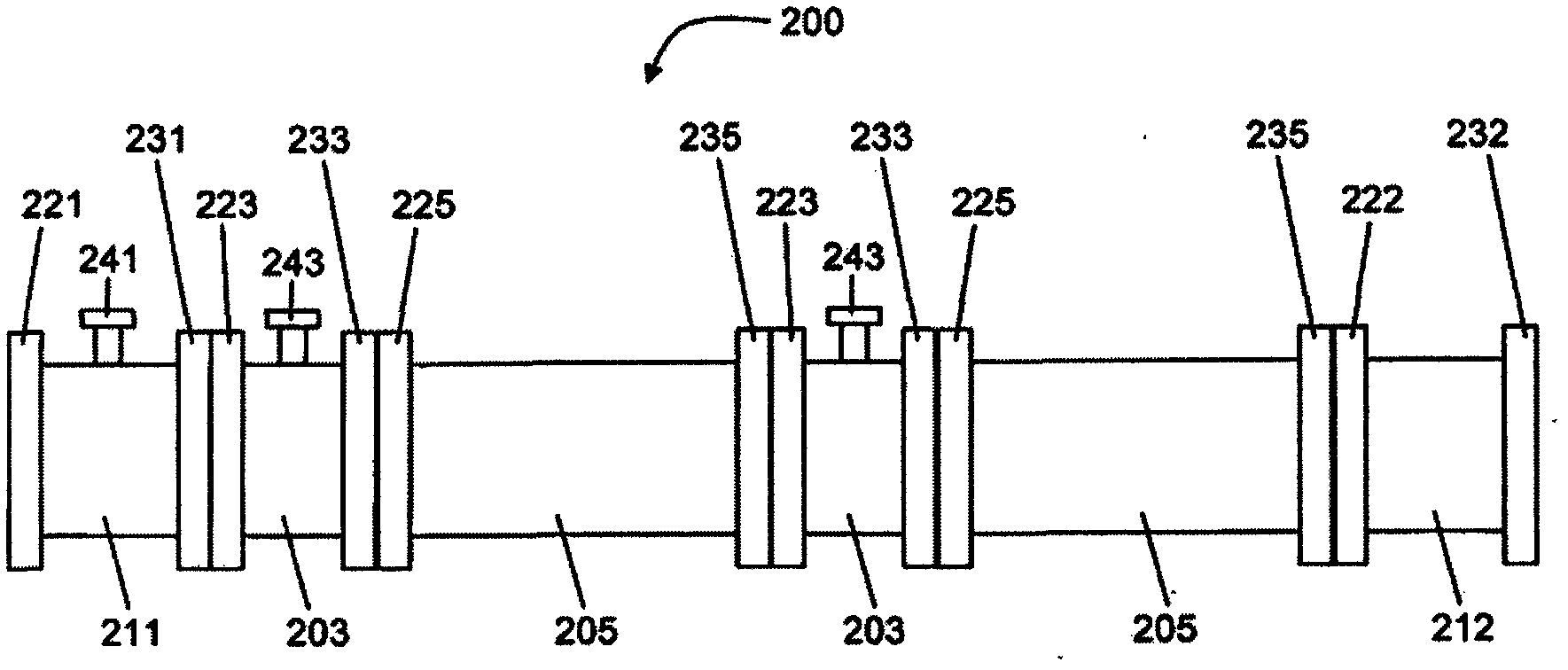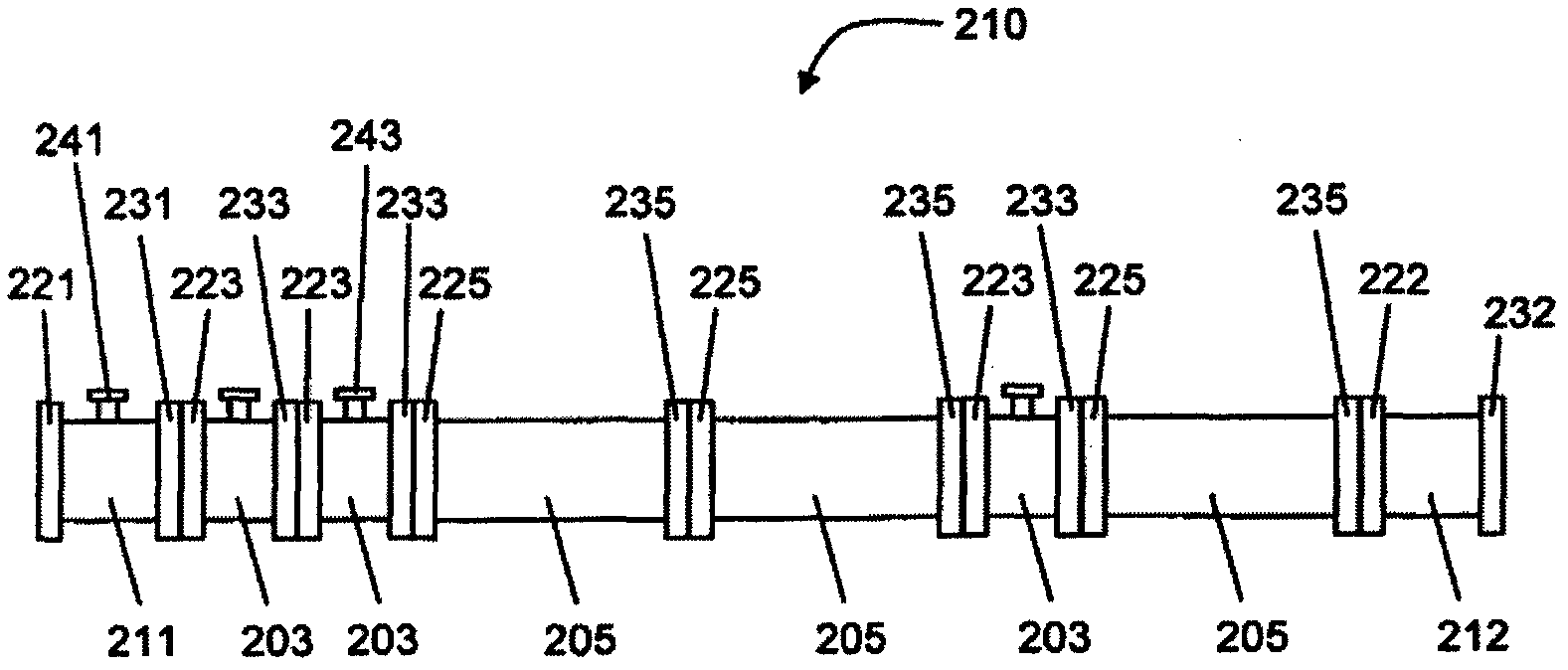Apparatus, systems, and methods for water treatment
A water inlet, horizontal technology, applied in water/sewage treatment, water treatment parameter control, chemical instruments and methods, etc., can solve problems such as equipment cost and complexity preventing widespread use
- Summary
- Abstract
- Description
- Claims
- Application Information
AI Technical Summary
Problems solved by technology
Method used
Image
Examples
Embodiment 1
[0162] A process comparison of the compositions, systems and methods according to the present invention and conventional methods for removing taste and odor is shown in Table 4.
[0163] Table 4 Comparison of different treatments used to remove geosmin and MIB
[0164]
[0165] The data indicate that although chlorine is widely used in water treatment, it has some effect in removing geosmin and MIB from water. In addition, chlorine is known to impart to water its own characteristic taste and odor that is generally considered to be unpleasant. Powdered activated carbon (PAC) was more effective than chlorine at removing MIB and about as effective as chlorine at removing geosmin. Potassium permanganate was about as effective as chlorine at removing geosmin and less effective at removing MIB.
[0166] Hydrogen peroxide was more effective than chlorine at removing MIB and was about as effective as chlorine at removing geosmin. Ozone treatment (ie, ozone only, without hydrogen...
Embodiment 2
[0169] A comparison was made between ozone dissolution treatment and advanced oxidation treatment for destruction of geosmin. Lake water (raw or "RAW", and condensed and intermediate filtered or "FIL") was exposed to varying amounts of ozone. In the ozone dissolution treatment ("O3"), lake water was exposed to ozone alone for 5 minutes. In advanced oxidation processing ("AOP"), lake water is exposed to hydrogen peroxide and ozone for 1 minute. Hydrogen peroxide is present in an amount of about 0.5 parts per million ("ppm") of ozone per 1 ppm of ozone. The results of this experiment are shown in Figure 7 middle. For untreated water, a 50% drop in ozone dose was seen when AOP was used to achieve the same level of geosmin destruction. For filtered water, when using AOP to achieve the same level of geosmin destruction, a reduction in ozone dose estimated to be much greater than 50% can be seen.
[0170] Similar experiments were carried out to compare the destruction of geosm...
Embodiment 3
[0172] Determine the conditions to achieve a level of disinfection sufficient to meet the standards of California Code of Regulations Title 22. Results are obtained using ozone dissolution treatment or advanced oxidation treatment methods under pressure. Two series of experiments were performed on a pilot scale reactor (10 gallons per minute (gpm) or 18.6 gpm) and the remainder of the experiments were performed on a benchtop reactor (approximately 3 gpm). A pilot scale reactor was tested in the Dublin San Ramon Services District (DSRSD) and was supplied with water from various wastewater facilities throughout California prior to treatment with ozone or ozone / peroxide , by sand or microfiltration.
[0173] Detailed testing of the response of various pathogens and indicator organisms to different treatment conditions to determine the effects of ozone dose, contact time, temperature, pH, alkalinity, and solids content, as well as the method of ozone injection (i.e., direct gas o...
PUM
 Login to View More
Login to View More Abstract
Description
Claims
Application Information
 Login to View More
Login to View More - R&D
- Intellectual Property
- Life Sciences
- Materials
- Tech Scout
- Unparalleled Data Quality
- Higher Quality Content
- 60% Fewer Hallucinations
Browse by: Latest US Patents, China's latest patents, Technical Efficacy Thesaurus, Application Domain, Technology Topic, Popular Technical Reports.
© 2025 PatSnap. All rights reserved.Legal|Privacy policy|Modern Slavery Act Transparency Statement|Sitemap|About US| Contact US: help@patsnap.com



